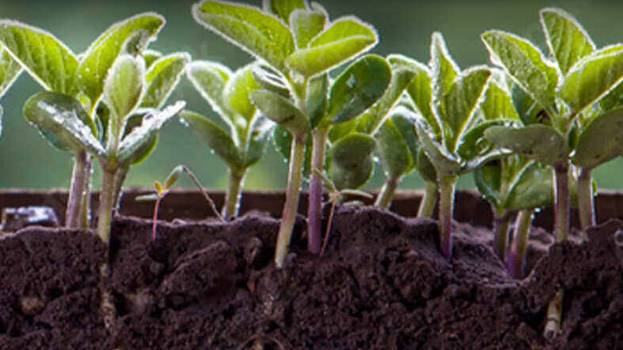Developing Economies: New Face of the Biotech Boom

Growers are more game to adopt biotech crops than ever before. Naturally. “They know it works,” says Dr. Clive James, who has tracked the spread of genetically engineered seed around the globe since Monsanto commercialized the Roundup Ready soybean 16 years ago. Biotech has changed the trajectory of agriculture forever.
The biggest surprise? “It is the increasing strength of the developing countries,” James told Farm Chemicals International in advance of the release of his new in-depth (at 325 pages) report, published every year by the nonprofit he founded, the International Service for the Acquisition of Agri-Biotech Applications.
Imagine six United Kingdoms. This is equal to the land commercialized biotech crops covered in 29 countries last year. As far as untapped potential: “It’s the tip of the iceberg,” he says.
Brazil, China, India, Argentina and South Africa – representing 40% of the world’s population – grew 44% of the world’s GM crops in 2011. The uptake of biotech crops in 19 developing countries was twice as fast and as large last year as in industrialized countries. For the first time in 2012, they are expected to pass developed nations in planted area, according to his report, “Global Status of Commercialized Biotech/GM Crops: 2011.” Brazil posted the largest gain of any other country last year with its soybeans, corn and cotton, comprising 19% of the world’s biotech crop area.
All told, commercial GM planted area rose 8% to 160 million hectares in 2011. Some 16.7 million primarily small, resource-poor farmers opted for GM seed, 8% more than 2010. “Repeat business is almost 100%,” James says.
“When GM rice comes on board [in 2013 or ‘14] – 90% of rice in the world grown in developing countries – and wheat of course later, the concentration of growth in the developing countries will be even more obvious than it is now,” he explains.
Herbicide tolerance is the unrelenting dominant GM trait. In 2011, herbicide tolerance in soybeans, corn, canola, cotton, sugarbeet and alfalfa covered 59% or 93.9 million hectares of all GM crops, down from 61% in 2010. Double- and triple-stacked traits covered 11% more area than insect-resistant varieties. Stacked traits caught on fastest overall, surging 31%, while herbicide tolerance edged up 5% and insect resistance declined 10%.
In 2005, James predicted that up to 40 countries could be planting and selling GM crops by 2015, and that the number of GM hectares would double to 200 million. Those projections remain on track, he says.
Dethroning The King?
The US continued its reign as the biotech king in 2011 with 43% of the world’s biotech crop area totaling 69 million hectares, up 3% from a year earlier. Corn and cotton picked up even more momentum, while farmers resumed planting Roundup Ready alfalfa. Adoption of GM alfalfa, the fourth-largest crop in the US by area, could approach 50% by 2015, James says.
What is the fastest adopted biotech crop? That would be the Roundup Ready sugarbeet, with an overwhelming 95% adoption rate, equivalent to about 475,000 hectares. Its success bodes well for sugarcane, James says. Biotech traits for cane are being developed in places like the US, Australia, Colombia and Mauritius, among others. Australia granted approval for field trials in 2009, but the crop has not yet been commercialized.
And while the US is the bellwether in terms of global market share, Brazil is gaining. James calls it the “engine of growth.” Brazil planted 30.3 million hectares last year, up 20% (the lion’s share of it being soybeans). And Argentina wasn’t far behind at 23.7 million hectares.
Brazil’s embrace of the technology – notably through the EMBRAPA’s partnership with BASF – provides “a model other developing countries should take a very careful look at,” says James. The country’s fast-track approval system sped along the approval of eight events in 2010 and another six events in 2011.
India grows more Bt cotton than anywhere else in the world. Its planted area stretched 10.6 million hectares in 2011, covering 88% of a record 12.1 million hectare crop. India’s seven million small farmers grew, on average, 1.5 hectares of cotton. More than a dozen studies conducted between 1998 and 2010 have confirmed that Bt cotton boosts profits 50% to 110% versus conventional, equivalent to between $76 and $250 per hectare. Yields have risen in step from 30% to 60%, while reducing the number of insecticides used in India by half, James says.
Africa’s GM area under cultivation is still relatively small, but it is gaining ground. South Africa, Burkina Faso and Egypt planted 2.5 million hectares of biotech cotton, corn and soybeans. Three more African nations – Kenya, Nigeria and Uganda – are conducting field trials, with Malawi to follow.
China has commercialized just one materially important biotech crop: Bt cotton. It grew 3.9 million hectares at a 71.5% adoption rate in 2011, according to the report.
But Bt rice and biotech phytase corn are next in line, and will have “momentous implications” for China, James predicts. The crops received biosafety clearance in 2009 and are now in field trials. Bt rice could raise yields by 8%, which would help feed its population (expected to hit 1.6 billion in eight years, requiring about 630 million tons of rice) and deliver $4 billion a year in economic benefits. Plus, about 75% of rice in China is infested with insect borers, which the biotech variety controls.
Beijing-based private seed company Origin Agritech Limited is expected to commercialize biotech phytase corn in China, followed by glyphosate-tolerant corn, currently in phase 3 of environmental field tests, and finally Bt corn.
The last big holdout, biotech wheat, should be approved in China in about seven years, according to James. A variety resistant to the yellow mosaic virus is being field tested, and other traits are being developed.
Also making headway in GM is Australia, which planted its largest-ever biotech cotton crop last year at 597,000 hectares, plus 139,000 hectares of biotech canola. In Mexico, Bt cotton captured 87% of its 185,000-hectare crop, up 178% from 2010.
Big Loss For Europe
If there is a bleak spot, it is undoubtedly the European Union. Six EU countries (led by Spain) planted 114,490 hectares of Bt corn, up 26% from 2010. However, news in January that Germany’s BASF would relocate its Plant Science business to the United States due to Europeans’ lack of acceptance of the crops dealt a blow to GM science on the continent. The move ends the planting of BASF’s Amflora starch potato.
“It’s a big loss for Europe,” James says. “Innovation must be looked at as an opportunity, not as a threat. Practice what you preach. Europe is saying one thing and doing another thing.”
Biotech seed was valued $13 billion worldwide in 2011, with the end products of commercial grain from biotech crops worth $160 billion per year, ISAAA estimates.
James adds: “I’ve had the privilege of talking to farmers in countries in 150 countries around the world, and one feature about farmers is that they are risk-averse. They are used to dealing with uncertainty, and it is very rarely that you can fool a farmer.” While politics restrains the growth of biotech crops in Europe, in dozens of other countries, their meteoric ascent continues. “If the technology doesn’t deliver the benefits, farmers are the first to reject it.”






